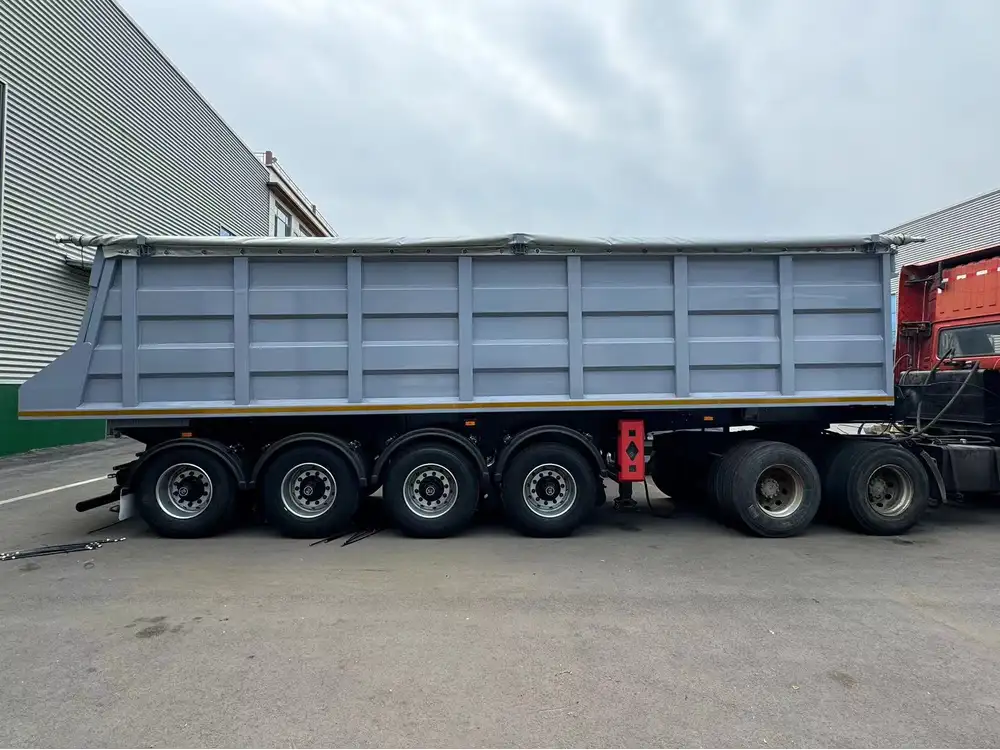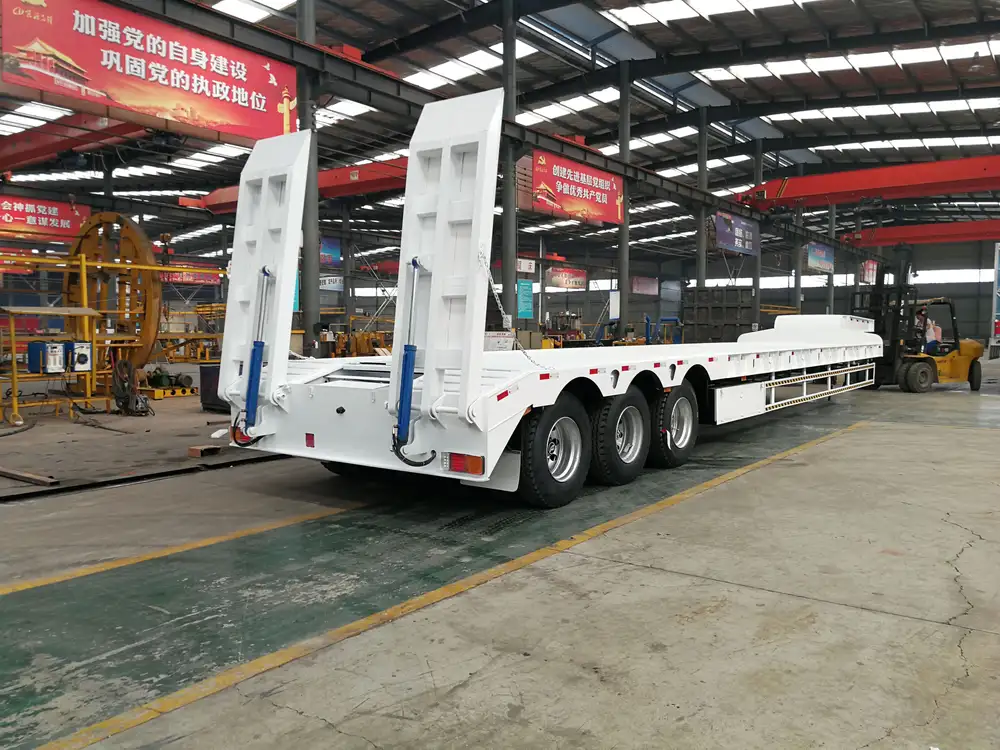When diving into the intricacies of the trucking industry, various specifications become crucial for operators, manufacturers, and logistics managers alike. One of the most consequential queries often revolves around the weight of a semi tractor without a trailer. This metric is not merely a number; it influences driver regulations, profitability, operational limits, and safety protocols. In this comprehensive guide, we will explore these elements, peeling back the layers of what the weight entails and why it matters.
The Basics: What Is a Semi Tractor?
A semi tractor is a powerful vehicle designed to pull a semi-trailer through a combination of its own internal mechanisms and supplemental axles. Built with both sturdiness and power in mind, these trucks primarily facilitate the transportation of goods over long distances, making them indispensable in the supply chain. Generally, a semi tractor consists of two main components: the cab, where the driver sits, and the chassis, which houses the engine and other essential machinery.
Key Components of a Semi Tractor
| Component | Function |
|---|---|
| Engine | Powers the tractor to move and accelerate. |
| Transmission | Manages power delivery from the engine to the wheels. |
| Chassis | The base structure that supports the truck and houses vital components. |
| Cab | Contains driver controls and seating. |
| Axles | Ensures stability and supports the vehicle on the road. |

Average Weight of a Semi Tractor
The weight of a semi tractor varies based on several factors, including its make, model, material of construction, and whether it is equipped with additional features for performance and comfort. On average, a semi tractor without a trailer weighs between 15,000 to 25,000 pounds (6,800 to 11,340 kilograms).
Factors Influencing the Weight of a Semi Tractor
Manufacturer Specifications Each manufacturer designs their tractors with unique specifications. For example, a newer model may weigh less due to advancements in technology and performance optimization.
Material Composition The use of lightweight materials, such as aluminum and composite plastics, versus traditional steel can significantly reduce the overall weight.
Additional Features Advanced safety features, comfort elements like enhanced suspension systems, and luxury cab designs can add to the weight.
Engine Size Tractors come with various engine sizes, typically ranging from 10 to 15 liters. Heavier engines often amplify the weight.
Configurations Many tractors can be configured with either single or dual rear axles. Dual axles provide greater stability when loaded, but they also add to the weight.
A Closer Look at Popular Semi Tractors
| Model | Weight Without Trailer (lbs) | Engine Size (liters) | Comments |
|---|---|---|---|
| Freightliner Cascadia | 19,000 – 22,000 | 12.8 | Known for fuel efficiency and comfort. |
| Kenworth T680 | 18,000 – 24,000 | 12.5 | Combines power with high-tech features. |
| Volvo VNL | 18,500 – 23,500 | 13.2 | Offers optimal aerodynamics. |
| International LT | 17,500 – 21,500 | 11.9 | Focus on durability and reliability. |

The Importance of Knowing the Weight
Legal Regulations and Compliance
In the United States, the Federal Highway Administration (FHWA) mandates weight limits for vehicles traveling on public roads. For instance, the maximum weight allowed for a semi truck operating on federal highways is 80,000 pounds, which includes the tractor and trailer. Understanding the empty (tare) weight of the tractor helps operators plan correctly to avoid legal repercussions and fines.
Impact on Payload and Profitability
A semi tractor’s weight directly influences its payload capacity. The payload is the weight of the cargo the vehicle can carry, which is critical for calculating profitability. If a tractor’s weight significantly encumbers its total allowable weight, less cargo can be transported per trip, affecting revenue margins.

Safety Considerations
Understanding the weight of a semi tractor is fundamental when assessing its performance dynamics such as braking distance, fuel efficiency, and handling. An overloaded tractor may suffer poorer braking performance, higher tire wear, and increased fuel consumption, thus impacting overall operational safety.
Weight Distribution and Axle Configurations
Significance of Weight Distribution
Proper weight distribution across axles is equally vital for the safe operation of a semi tractor. The allowable weight on each axle can differ based on state regulations, and proper understanding can help minimize wear, assisting both longevity and safety.

Axle Configurations
Common Configurations
Single Rear Axle
- Typically lighter—ideal for smaller loads.
- Increased maneuverability, but may have lower load-bearing capacity.
Tandem Rear Axles
- Provides better weight distribution.
- Can accommodate heavier loads without compromising safety.
Tridem or Quad Axles
- Necessary for high payload requirements and specialized transport.
- Offers maximum weight distribution but adds complexity.
Weight Measuring Techniques

Weigh Stations
Weigh stations are strategically located across highways for trucks to be weighed. Operators should be aware of these stations as they regulate compliance with weight limits. Trucks often stop at these stations to ensure they conform to legal weight restrictions.
Portable Truck Scales
In cases where weigh stations are not conveniently located, portable truck scales can provide an on-site solution. These scales are particularly useful for fleet managers wanting to maintain compliance and minimize risk.
Load Cells
Load cells strategically placed on a tractor’s axles can provide real-time weight monitoring, giving operators immediate data about their load’s weight distribution.

Conclusion
Understanding the weight of a semi tractor without a trailer is not just a piece of trivia. It serves as a cornerstone for operational efficiency, safety, legal compliance, and profitability in the logistics sector. With weights typically ranging from 15,000 to 25,000 pounds, one must also consider how factors like engine type, axle configuration, and manufacturer specifications contribute significantly to that number. Being informed of these nuances can empower operators to plan effectively, maximizing returns and enhancing safety protocols.
Navigating the complexities of weight management requires valuable insights and meticulous planning. This understanding is a strategic asset that can drive operational success, leading to increased profits and reduced overhead costs in the competitive world of trucking.
Additional Resources
- Federal Motor Carrier Safety Administration (FMCSA) – Weight Limits
- State Department of Transportation Regulations
- Trucking Industry Freight Load Calculators
By leveraging this detailed information, truck operators and logistics managers can make well-informed decisions about their fleets, ensuring compliance, safety, and profitability in the dynamic landscape of freight transportation.



